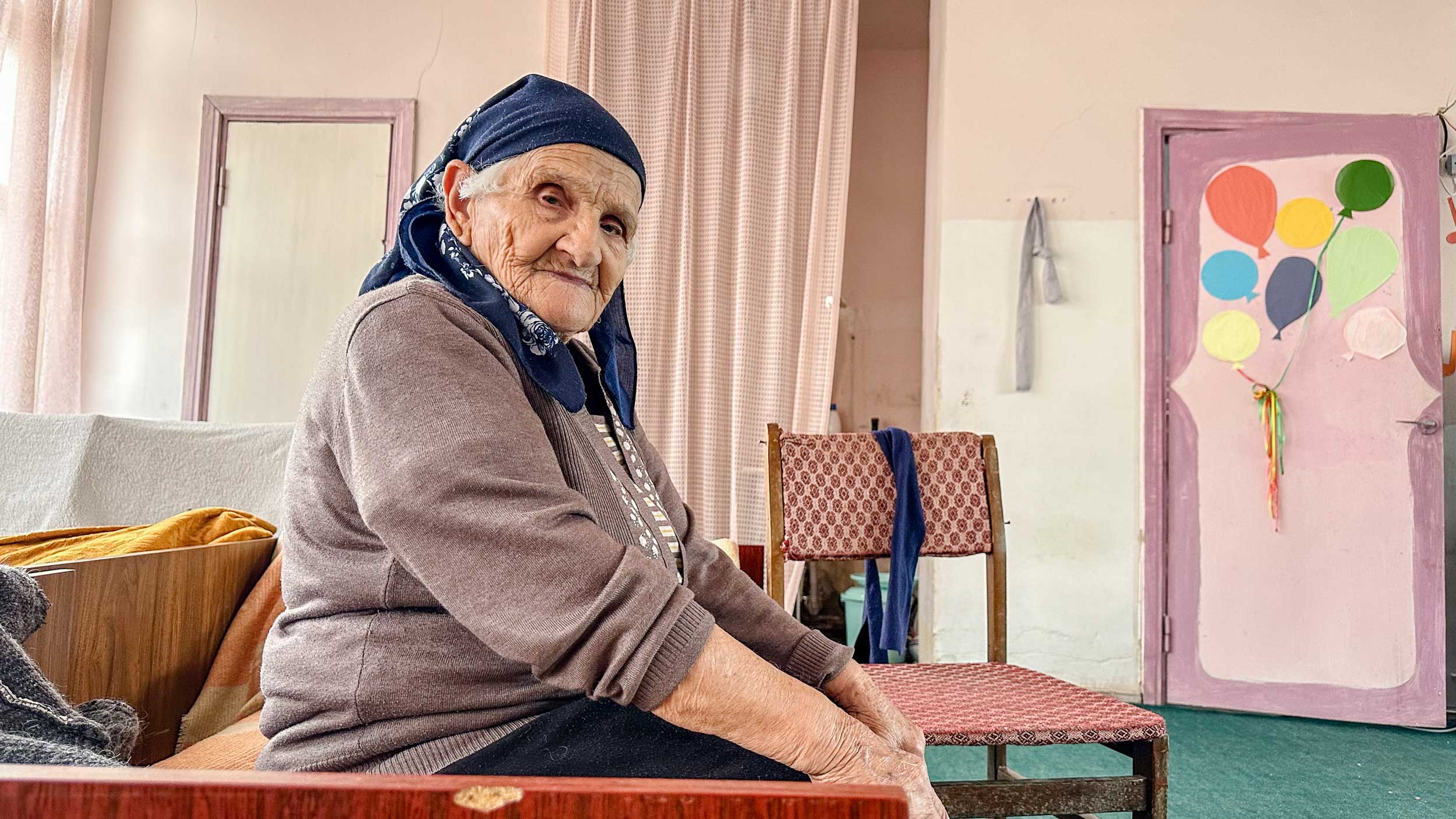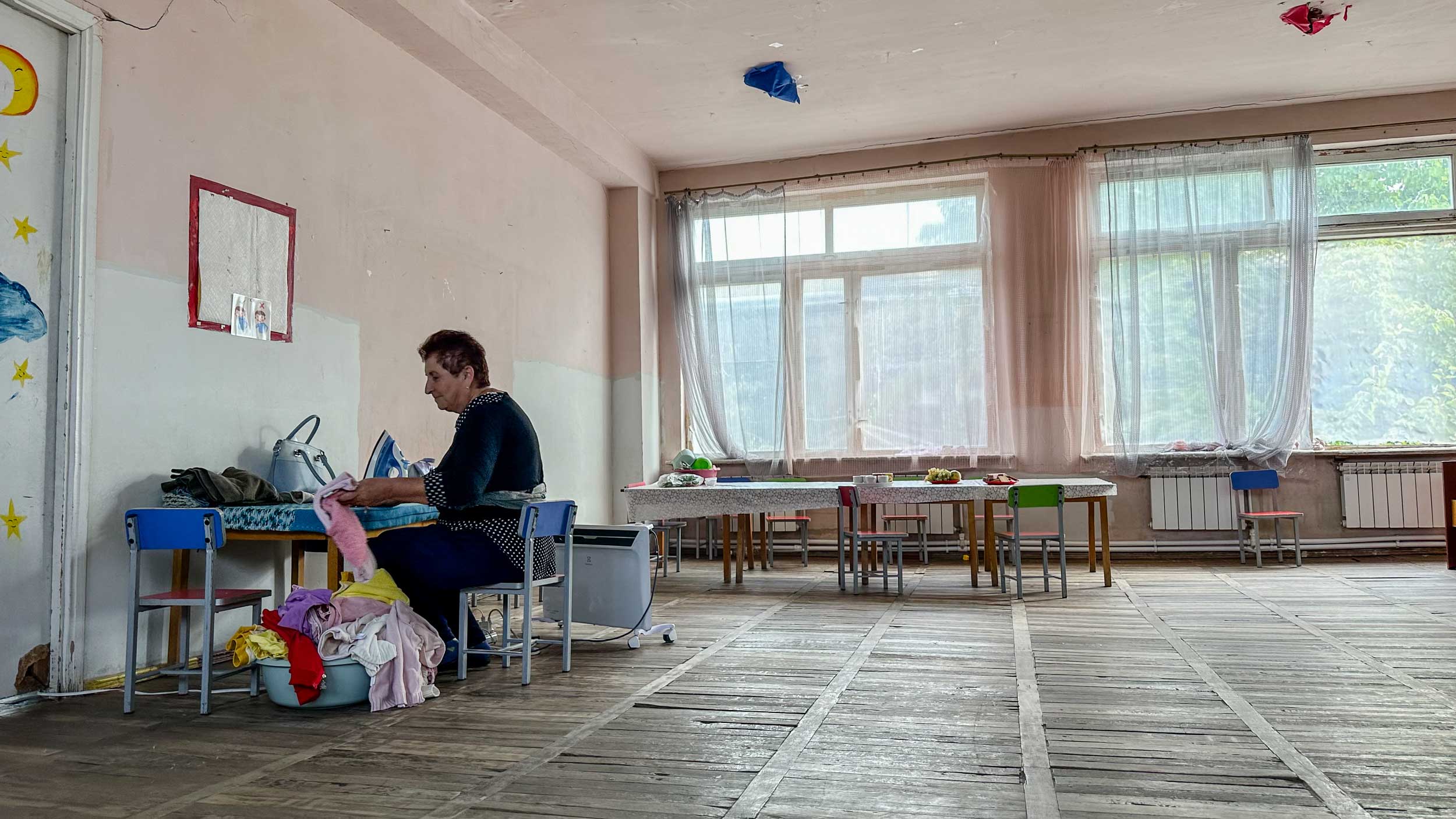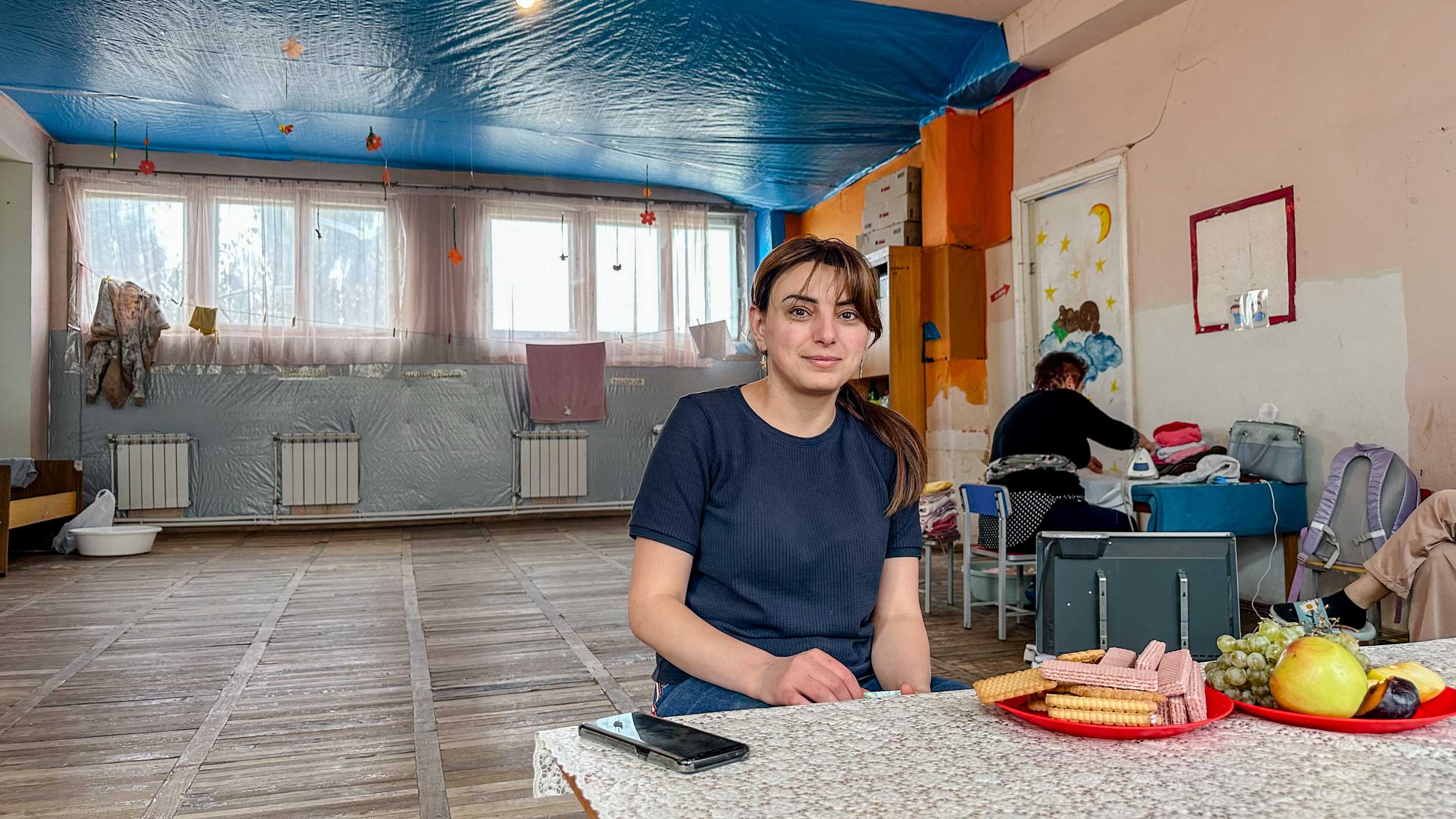Nagorny Karabakh’s Armenians Struggle to Cope with Displacement
Tens of thousands of refugees are sheltered in centres across Armenia and face economic and psychological hurdles.
When 86-year-old Julieta Shahbazyan looks around the room she now shares with 23 members of her family, she is overwhelmed by memories. Her new home is a former kindergarten in Artashat, western Armenia; she had previously never left her native village of Aygestan in the Nagorny Karabakh region.
On September 19, Baku launched a 24-hour military offensive in which it regained control of the region. Karabakh is internationally recognised as part of Azerbaijan but since the mid-1990s large areas had been controlled by ethnic Armenians.
When Shahbazyan fled the fighting, she did not expect that her displacement would be permanent.
“I left the doors of the house open and went out, thinking of returning soon. What I regret the most is leaving the graves of my relatives behind.”
Shahbazyan arrived in Armenia on September 28, after a nearly 72 hour-long journey along the Lachin corridor, the serpentine mountain road connecting Karabakh to Armenia. It normally takes about two-and-a-half hours to cover its 90 kilometres, but the large-scale evacuation jammed the only route out with over 100,00 people leaving in just a few days.

The operation came on the heels of a nine-month blockade that had left Karabakh’s some 120,000 Armenians exhausted, with no access to essential supplies, including food, medication, gas, and electricity.
Artashat’s kindergarten number 6 shelters Shahbazyan and 73 other Armenians from Karabakh. For many, it is the first time war does not loom over them.
“Children are particularly struck by the absence of gunfire,” Karine Harutyunyan, the director of the kindergarten, told IWPR. “Yet, despite our efforts to provide them with the best possible conditions, they still want to return to their homes. [There is] one child, who cries non-stop, saying, 'I want to go back to our home’.”
Collective centres have been set up across the country to accommodate the refugees. Addressing the European Parliament on October 17, Armenia’s Prime Minister Nikol Pashinyan highlighted that the government was providing asylum, shelter and support to Karabakh Armenians. Yerevan has funded Karabakh’s state budget since the end of the First Karabakh War in the mid-1990s.
However, refugees and aid workers warn that the state aid programme and the support of international organisations is not even close to addressing the needs of such a large number of people. Centres are in need of everything to support families, many of whom left in a rush, leaving behind their lives, memories and, in many cases, even documents.
Single parent Hermine Hayrapetyan, 35, is also living in the kindergarten with her daughter, her three sisters and her brother’s families. She is worried about being able to find a permanent home as the 40,000 drams (about 100 US dollars) that the state pledged as a monthly allowance for households are not enough to cover rent costs.
“Rents are high and landlords often demand several months' rent upfront,” she said.
Madlena Ghahiryan, who shares a room with 16 members of her family, echoed Hayrapetyan’s worries.

“After Azerbaijan invaded Artsakh [as Armenians call Karabakh] in 2020, we didn't live peacefully, but despite the challenges, we managed to repair our house, to have a livelihood, and, during the blockade we braced ourselves for the winter…I prepared pickles, dried beans and greens and ground wheat to create a winter reserve,” explained the 62-year-old nurse, from Khramort village.
“During the military invasion, I lost contact with my two soldier sons, who were besieged. The important thing is they were eventually found,” she said.
Many refugees lost their homes for the second time after Azerbaijan regained control of large swathes of territory in the 2020 war.
Hayrapetyan was among them: she and her family had to leave their village in Hadrut region after it fell under Baku’s control in November 2020. She and family first moved to Armenia for safety and returned to Karabakh after the November 9 ceasefire, settling in Stepanakert, the main city, which Azerbaijanis call Khankendi.
The 35-year-old is frustrated over what she described as the international lack of interest towards the fate of Karabakh Armenians.
“For nine months [during the blockade] we had nothing, children were starving… European organisations, human rights defenders, NGOs, no one cared to see what was happening, to see how we were surviving. Now they [come in] and fill some forms. I don’t care about their paperwork.”
Hayrapetyan yearns to return to her home, but cannot imagine living with Azerbaijanis.

“We didn't want to leave. But it will be impossible to live under Turkish [Azerbaijani] rule. No matter how often they say to the world ‘we are civilised’ they will massacre us, poison us…” she told IWPR.
Fear and distrust are common among Armenians from Karabakh and are what drove nearly all of them away from their homes.
‘’We were hungry and there was no food,” Shahbazyan told IWPR, recalling the journey to Armenia. “At one point, Azerbaijani and Russian soldiers approached us and offered sweets to the children. I took the first one and ate it to make sure it wasn't poisoned.”
Hayrapetyan's 14-year-old niece, Marianna, is still grappling with the loss.
“After the 2020 war, we kept hoping that we would go back to Tumi, my native village [in Hadrut region]. We did not; then we lost all of Artsakh,” she told IWPR.
“When the shelling started, my mother was making sweets with mulberry jam,” she continued. “The next day was my brother's birthday. I made cards because I couldn't find any other gift for him during the blockade. All that was interrupted by my mother's panicked voice, ‘Let's go down to the basement quickly.’”
Her father had served in Karabakh’s army, Marianna explained, adding, “We couldn’t sleep for two nights until we received the news that my father was alive. He was surrounded in the forest, but he couldn't get out. When they said that they should evacuate us, I told my mother that I wouldn’t leave until my father’s return.”
Alvard Dadayan’s husband also served in the army; he was killed during the first Karabakh war, in the 1990s. The 54-year-old from Stepanakert cannot hold back tears when she recalled that she no longer possessed a photo of husband in military uniform.
“I had it with me but on the way we were told that they [Azerbaijanis] would check all cars,” she said. “I did not want to put my sons in danger, so I hid his photo under a stone along the way.”
All photos by Siranush Sargsyan
This publication was prepared under the "Amplify, Verify, Engage (AVE) Project" implemented with the financial support of the Ministry of Foreign Affairs, Norway.
